- | 9:00 am
Inside the making of the world’s longest cantilever
Cantilevers are feats of engineering. The longest now stretches for 328 feet above Dubai.
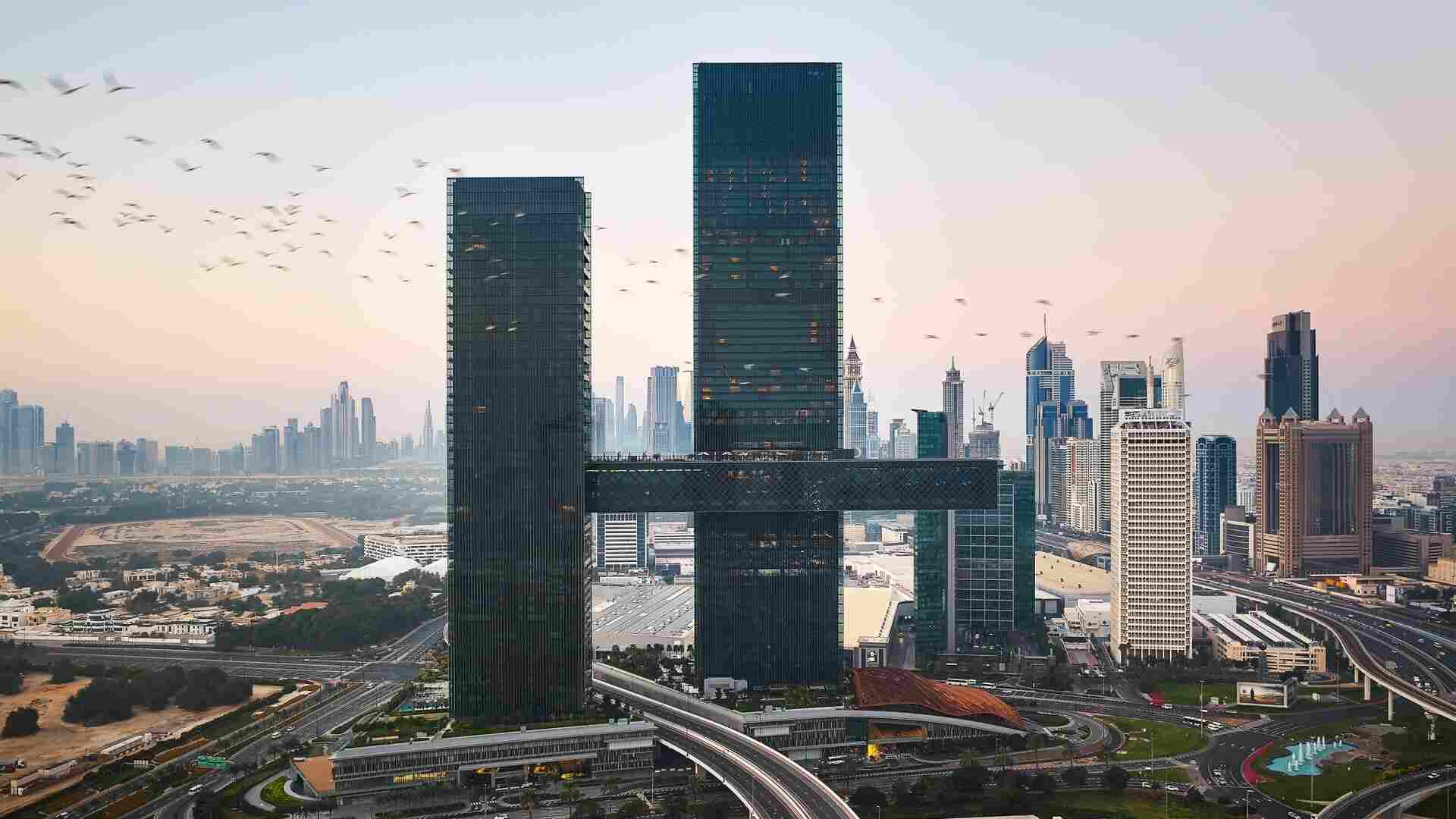
Few aspects of architecture are as dramatic as the cantilever, a rigid structural element that extends horizontally, unsupported at one end, from a building. It’s the closest an edifice can come to flying.
Arguably the world’s most famous cantilever belongs to Frank Lloyd Wright’s masterpiece, Fallingwater, whose room-size concrete balconies float mesmerizingly over a waterfall in Bear Run, Pennsylvania.
“I want you to live with the waterfall, not just to look at it, but for it to become an integral part of your lives,” Wright told his clients, the Kaufmann family of Pittsburgh.
As technology has evolved, cantilevers have grown longer and longer. Almost like a skyscraper height war, turned on its side. The longest, as of this February (unseating the Instagram-favorite Marina Bay Sands Skypark in Singapore by about three feet), is located in Dubai, a city full of superlatives that also boasts the world’s tallest building (Burj Khalifa), the world’s tallest observation wheel (Ain Dubai), the world’s largest fountain (Dubai Fountain), and the world’s longest urban zip line (Xline Dubai Marina), among others.
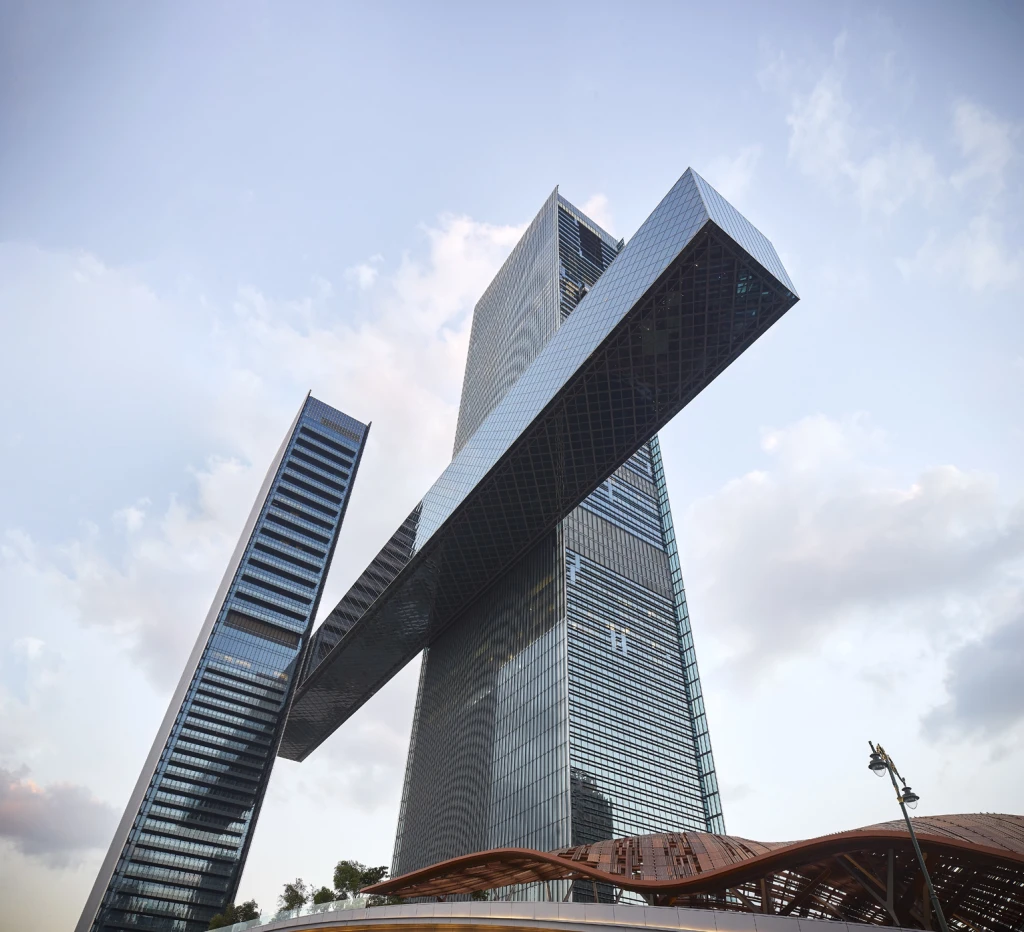
The new horizontal champion belongs to One Za’abeel, a glassy, two-towered development in the emirate’s financial district containing a One&Only resort, luxury residences, offices, dining, retail, and leisure. Floating 328 feet in the air between the offset, pinstriped towers is a three-story-tall, 755-foot-long, glass-clad structure known as The Link. The cantilever projects a dizzying 217 feet from the taller tower, turning the two towers into an extended “H.”
As the name suggests, The Link connects the vertical development with about 10 chandelier-filled restaurants, a connector called the ”Bridge of Love,” and a partially glass-bottomed bar and events venue called Sphere, in the cantilevered section. The developer calls it “the boulevard of the future.” On its roof is the UAE’s longest infinity pool.
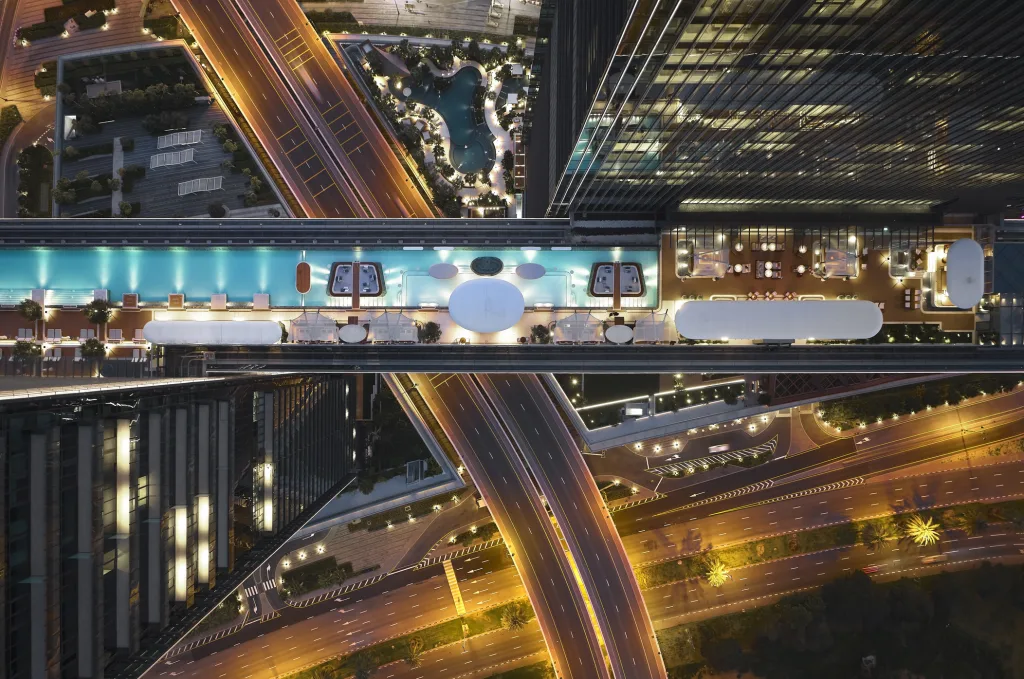
Giving visitors the sense of floating over the city with no visible support (One Za’abeel also spans a multilane highway), The Link is in fact supported by a structural system made of steel framing arranged in a tubular diamond grid (diagrid) pattern along four sides, creating a continuous, column-free interior. Weighing over 9,000 tons, The Link was built on site then lifted and attached in two phases (main structure, then cantilever) over 12 days. One Za’abeel’s two towers (reaching 1,000 and 770 feet, respectively) were each built on a slight lean to accommodate The Link’s heft. The development’s base contains more public space: The Podium, a three-story area filled with stores, restaurants, and greenery.
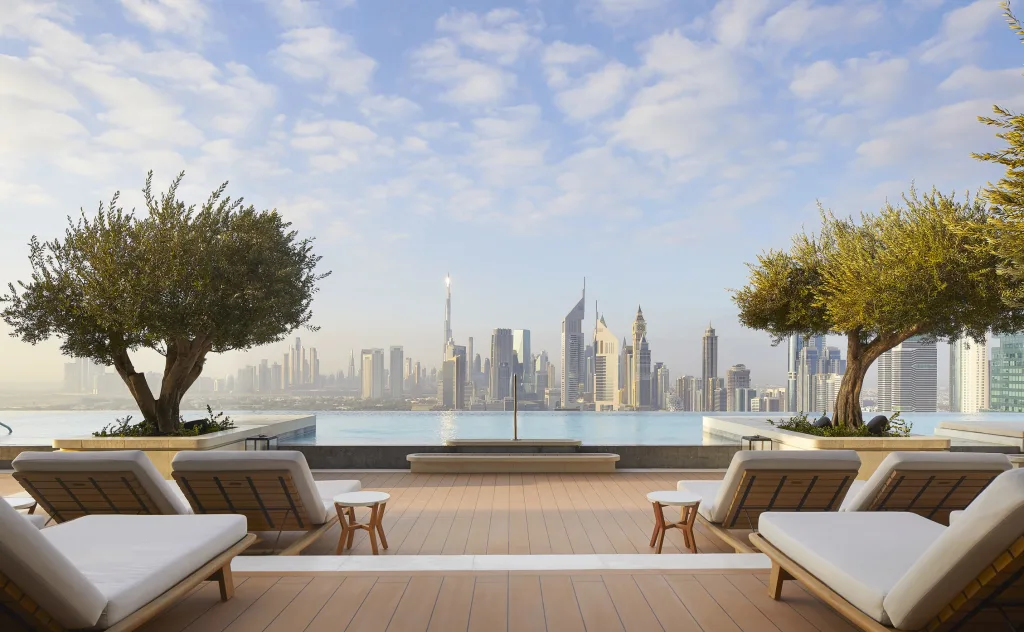
The project’s architect, Japanese firm Nikken Sekkei, boasts quite a few challenging structures in its portfolio, including Tokyo Tower (a fraternal twin of the Eiffel Tower), Tokyo Skytree (the world’s tallest broadcast tower), and the Hoki Museum, whose upper gallery cantilevers 98 feet over its forested site in Chiba, Japan.
One Za’abeel, says Nikken Sekkei’s chief architect for the project, Koko Nakamura, was a logical extension of those efforts, requiring the coordination of a phalanx of technologies, including digital structural analysis, multiple architectural softwares, structural wind reports, Building Information Modeling, pedestrian simulation software, and physical models at various scales. Nakamura likes to call the development’s H shape a “gateway to the city,” visible from the airport, and dividing Dubai’s old town and new downtown. The Link, he adds, points toward the Arabian Gulf, like a giant sign.
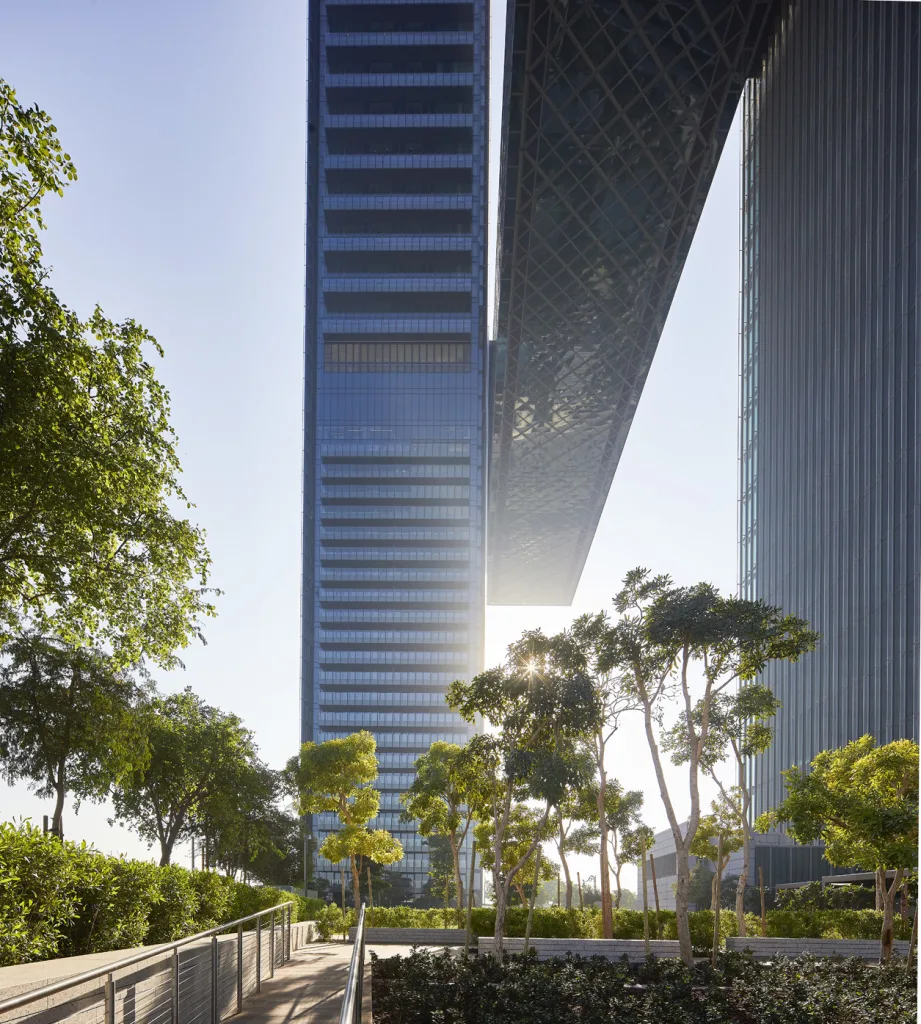
Hakan Ozkasikci, Executive Vice President of Design & Technical Services at Kerzner International, the project’s operator, thinks The Link might pioneer a bold approach for cities, “where building ecosystems can be generated on multiple levels, giving them larger building areas compared to their footprints,” he says.
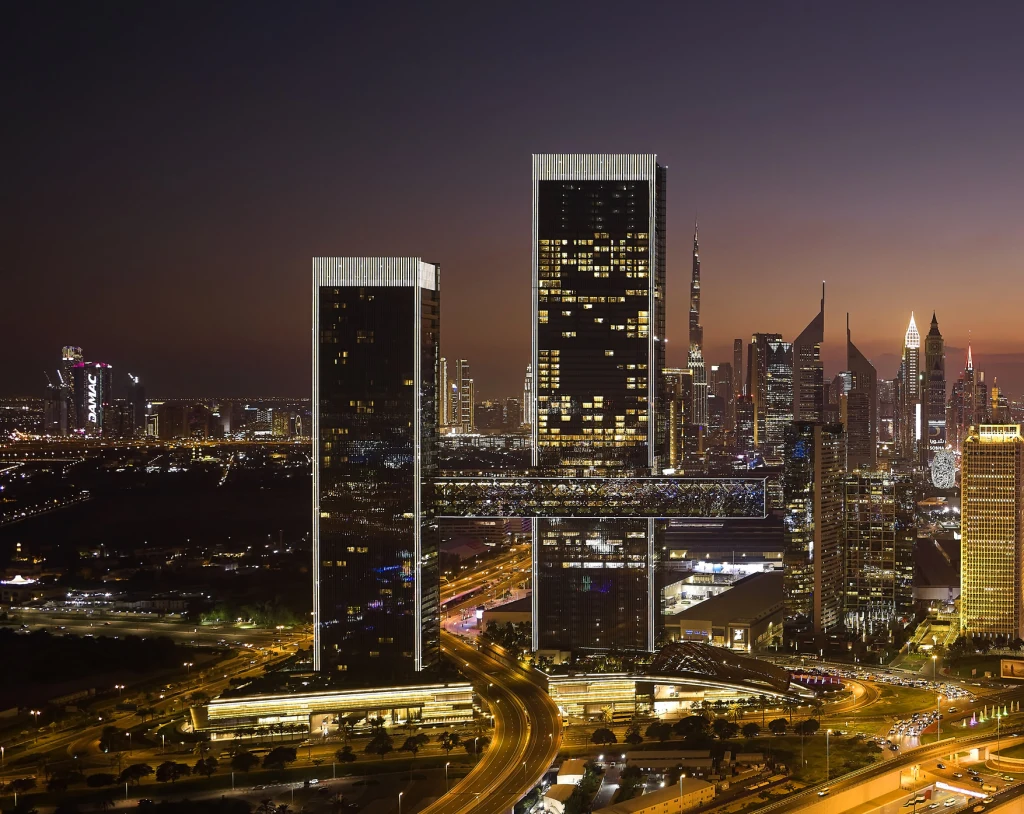
It’s an exciting thought. And while practical considerations will always be part of the equation, cantilevers, no matter how long, are really about emotion.
“The cantilever is about defying gravity, an element of surprise that creates a striking contrast in the built environment,” the late architect Zaha Hadid once said. Fellow starchitect Santiago Calatrava called it “an expression of the spirit of architecture; of the will to challenge conventional ideas and transcend them.”







































